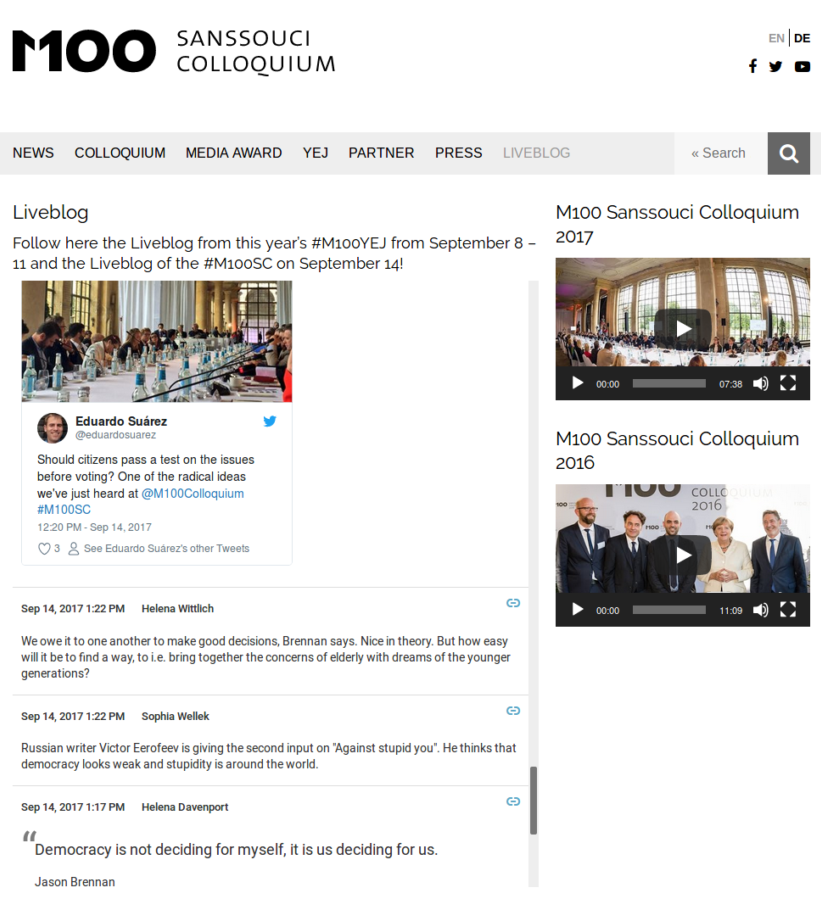by Todd Jatras | Nov. 5, 2019
November 5, 2019
Case Study: VOST.PT, Using Live Blog to Cover a Weather Emergency
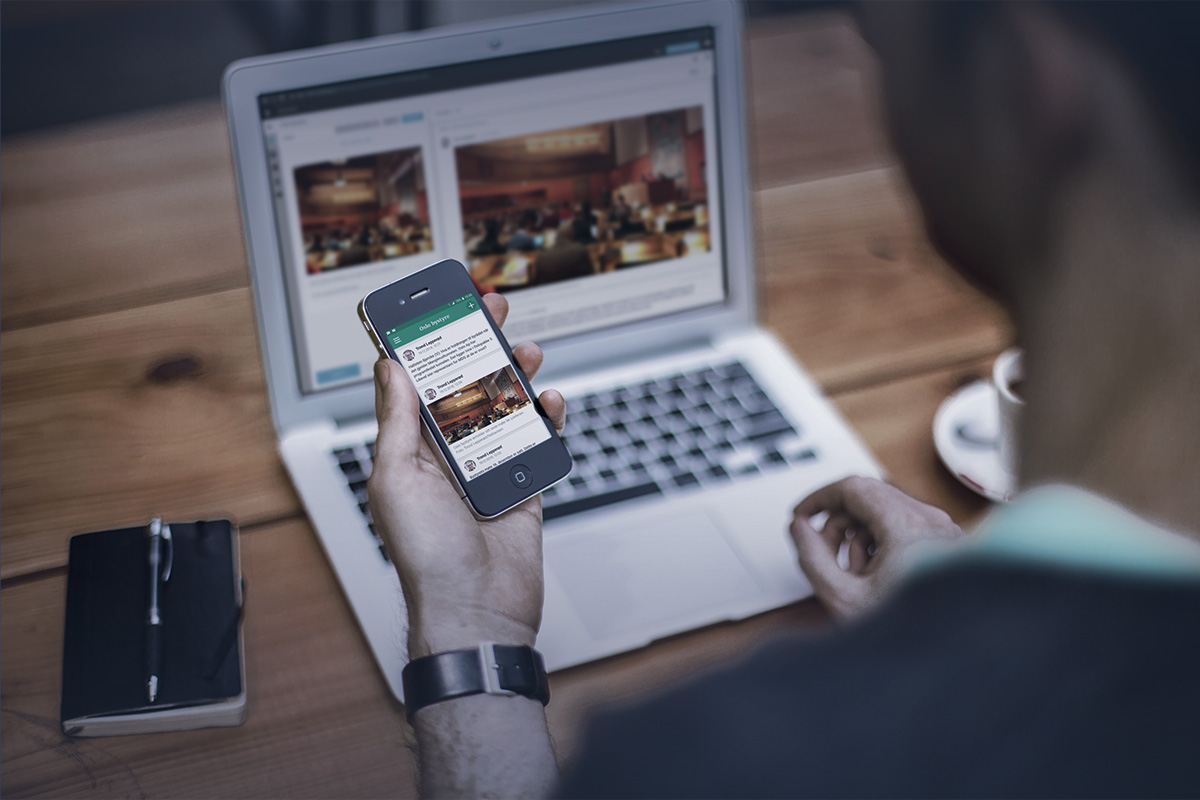
CASE STUDY
VOST.PT: Using Live Blog to Cover a Weather Emergency
Background:
VOST.PT is the Portuguese affiliate of VOST (Virtual Operations Support Team) Europe, a non-profit, online emergency response network that provides real-time intelligence to keep the public informed during times of crisis.
The VOST concept was developed in 2010 by a group of concerned emergency management communicators and technologists interested in filtering and managing social media during disasters, crises, and critical events. The goal was to build digital hubs where volunteers could gather and disseminate information in two directions. On one side, they would vet information from the public and pass it to the authorities. On the other, they would amplify the latest information from emergency services for the public.
Today, the VOST networks are a critical online source for events happening all over the world. After the Brussels terrorist attacks in March 2016, to use one example, VISOV (French-speaking VOST) quickly pulled together a team of 45 to monitor traditional media (TV, radio, print) and social media (Twitter, Facebook, YouTube, Instagram, Periscope, etc.) to identify information and breaking developments to keep those affected by the tragedy as up-to-date as possible.
The Challenge
VOST Portugal wanted to use a live blogging platform like our Live Blog software to cover Hurricane Lorenzo. The storm had briefly reached category 5, and was barreling towards the Azores and expected to reach the archipelago with potentially devastating force the next morning at the time of their first contact with Sourcefabric.
Because a key purpose of the VOSTs is to act as an intermediary layer in social media between the public and the authorities, VOST.PT needed a robust tool they could use to easily embed posts from any social medium.
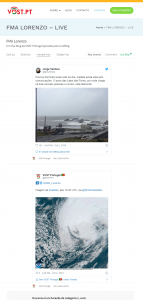
The Solution
Live Blog more than lived up to the challenge, providing VOST Portugal with a vital blogging tool that could incorporate all the social media platforms into a centralised repository, providing ample ways to editorialise it: curating, commenting and organising the latest information in a way that extracts what is most important or meaningful for the public.
Lorenzo skirted the western Azores, battering the nine volcanic islands of the archipelago with the strongest winds they had experienced in 20 years. One of the Azores’ most important commercial ports was destroyed, but fortunately, no deaths were reported.
According to Marco Maia, co-founder of VOST Portugal, Live Blog was the perfect tool to cover this dangerous event because it allows easy integration and imbeds from multiple social media sources, letting you sequence posts any way you want.
“At VOST Portugal, we work closely with social networks such as Twitter, Facebook and even Instagram. These social networks, despite having important tools in terms of content sharing, are limited in terms of publication history. That is, they are important in the communication structure of VOST Portugal, but probably due to their algorithms, they do not follow a logical sequence, something that Live Blog offers,” said Maia.
The Result
Live Blog Lorenzo registered 1,572 page views, and it was closely monitored by the news channel SIC Notícias. VOST.pt appeared there on the morning of October 2, contributing important crowd-sourced information gathered from those in the path of the storm as well as trajectory data from the National Hurricane Center in Miami, Florida.
According to Maia, “For us, LiveBlog allowed a deep content structuring ability that does not exist in a single social network or any combination of social mediums. That functionality, the ability to bring a lot of platforms and sources together in one accessible place, goes to the core of VOST Portugal’s activities.”
July 11, 2019
Case Study: Using Live Blog to promote reader engagement and media literacy

CASE STUDY
Nettavisen: Using Live Blog to promote reader engagement and media literacy
by Anna Rohleder | July 11, 2019
Norwegian online news site Nettavisen has used Live Blog to cover news events that generate a lot of discussion, such as the Premier League football player trading season, as well as the controversial trial of domestic terrorist Anders Behring Breivik in 2012.
The Challenge
Recently the site’s editors decided to experiment with Live Blog to cover news that usually doesn’t get so much public attention: in this case, meetings of the Oslo City Council. Part of the experiment was to see if there might be more interest from readers if the meetings themselves and the issues raised in them were more visible.
Nettavisen used Live Blog to cover city meetings once in the summer and once in the winter.
“Using the live tool to cover the Oslo City Council meeting was primarily a convenient way for us to take notes from the meeting and at the same time give the audience a way to see what was happening. It can be a tool that gets readers involved,” said Trond Lepperød, the reporter who covered the meetings.
It’s not just a way to get readers more involved with local government. It’s also an opportunity to educate them in how the news itself is constructed. The format of a live blog, with its chronological timeline of the meeting, along with quotes from various people speaking, supplemented by photos or other multimedia, “disassembles” all the elements of a conventional news article and presents them for consideration individually. Enhancing transparency toward readers was one of Nettavisen’s editor’s aims, in particular through sharing with the audience the source material they are working with.
It can also be interesting for other journalists to look through the meeting’s live blog as a kind of transcript and find topics to follow up on and make their own news stories about.
The Results
The verdict so far is that these experiments are worth doing, to keep exploring new storytelling formats and see how they work on different devices and platforms. Nettavisen aims to keep experimenting with the use of Live Blog for other breaking news events such as severe weather and elections.
“It’s about picking the right moment and occasion for the tool,” said Lepperød.
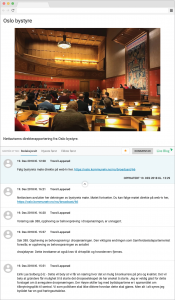
Some of the topics under discussion during the winter session included:
- Deregulation or some loosening of some of the existing rules governing the taxi industry.
- Banning e-bicycles in the municipal forests.
Some of the topics under discussion during the summer session included:
- Ensuring that the activities and investments to promote Oslo as Europe’s environmental capital are carried forward.
- Whether the police have guns in certain situations, i.e. when facing gangs.
June 27, 2019
Double duty at DPA: How Germany’s top news agency benefits from Live Blog

Double duty at DPA: How Germany’s top news agency benefits from Live Blog
by Anna Rohleder | June 25, 2019
The challenge
DPA is Germany’s main news agency with virtually all of Germany’s media organisations as their clients. Part of the value they offer is the ability to cover news events at the national and international level, especially when something sudden or unexpected occurs.
In dpa’s Berlin newsroom, there is a “top desk” where the agency’s journalists gather during such major news events. Among the other reporters and editors, there is a Live Blog editor who creates a new blog on the topic on the spot, adding updates as they come in.
The solution
“We can respond quickly to breaking news and launch a live blog about an event right away, which our clients can then put on their websites,” said Jirka Albig, head of marketing and product management at dpa-infocom. “It’s like an insurance policy for unforeseen events.”
Recent examples of these live blogs include the fire in Notre Dame, the terror attacks in Sri Lanka and ongoing political maneuverings over Brexit in Britain.
Having a ready-to-publish package of text, photos and a running commentary on the timeline of an event that’s unfolding in another country or continent is valuable in itself for newspapers and smaller media organisations in Germany, and even more so when such events happen outside of their newsroom hours, i.e. at night or the weekend.
All of dpa’s live blogs – including blogs covering planned events such as elections, as well as blogs related to running topics like top photos of the day – are available in their web shop. For customers, it is possible to buy individual blogs “a la carte” right from this page (and they are all free to browse or follow for readers). In practice, however, most of dpa’s clients have a subscription entitling them to publish any of the live blogs on offer.
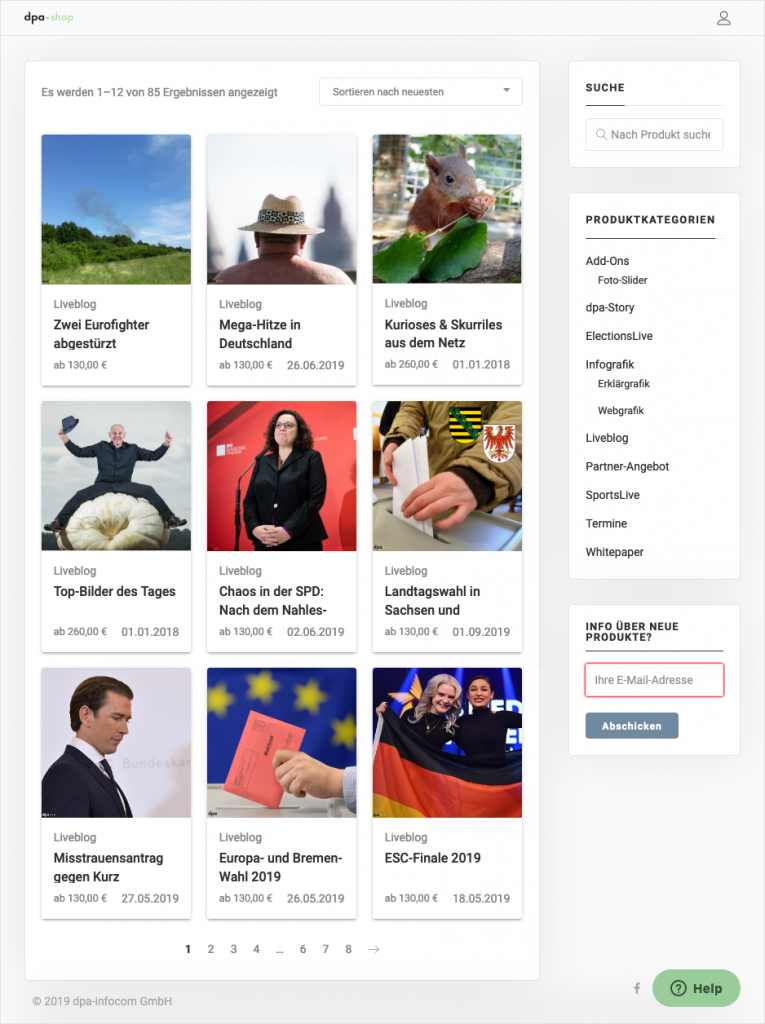
A variety of live blogs are available from dpa’s web shop.
Whether through a subscription or one-off purchase, the customer receives an embed code for the live blog, which they can then insert into their website. No matter what website platform a customer is using, integration is seamless: the content of the blog goes live on their site instantly.
If the news organisation is also using Sourcefabric’s Live Blog or another live blogging platform themselves, the possibilities for creating something even more valuable for the audience increase. The customer news organisation can add their own local content and commentary to the national or international news delivered by dpa, turning the live blog into a truly co-produced product.
Two recent examples of this type of cooperation included the crash of two Eurofighter jets in northeastern Germany and a live blog of a late-June heat wave. In both cases, the main news provided by dpa was supplemented by local news providers in the affected regions.
Live Blog serves a few key purposes both for dpa as a news agency and in the news ecosystem as a whole. First, it eliminates the technological and financial hurdles to producing live coverage, giving smaller media organisations in particular the ability to report on breaking news events. Second, Live Blog’s flexibility as a format fosters more creativity in journalistic storytelling. And as a collaboration platform, Live Blog allows news organisations of various sizes in different parts of the country to work together on something that benefits them all.
“It does represent an additional revenue stream for us, but its value is even greater for building customer relationships,” said Jirka Albig.
Ready to blog better? Sign up for the Live Blog newsletter, or get in touch with any questions here.
November 14, 2018
Case Study: Live-blogging Hamburg’s ESLOne

CASE STUDY
Case Study: Live-blogging Hamburg’s ESLOne
by Sarah Wilson | November 14, 2018
In today’s digital age, the definition of “sport” is broader than ever before. Today, sports are no longer confined to real players battling it out on a pitch or court, but can include virtual players too. E-sports, which feature real players controlling digital ones, have become increasingly visible and popular over the last few years. Business has boomed, with global revenues up a whopping 38.2% since 2017.
In a nutshell, e-sport tournaments are multiplayer video games played competitively by professionals before a crowd of spectators. The games vary from tournament to tournament, with the most popular including League of Legends, Dota 2, and Counter-strike.
The explosion of e-sports has also been great news for publishers and news outlets, who have expanded their coverage to include the tournaments. This year, our German news agency customers DPA, along with Hamburger Morgenpost, used Live Blog to cover Europe’s biggest Dota 2 tournament: the ESLOne Hamburg.
The Challenge
In most cases, the audiences tuning in to e-sports coverage are young, tech-savvy millennials. So when DPA decided to team up with Hamburger Morgenpost to cover the 2018 e-sports tournament ESL One, it was this audience they had to consider first and foremost when strategizing their coverage. The primary challenge, therefore, was to find the right format for reaching and making an impact on the target audience.
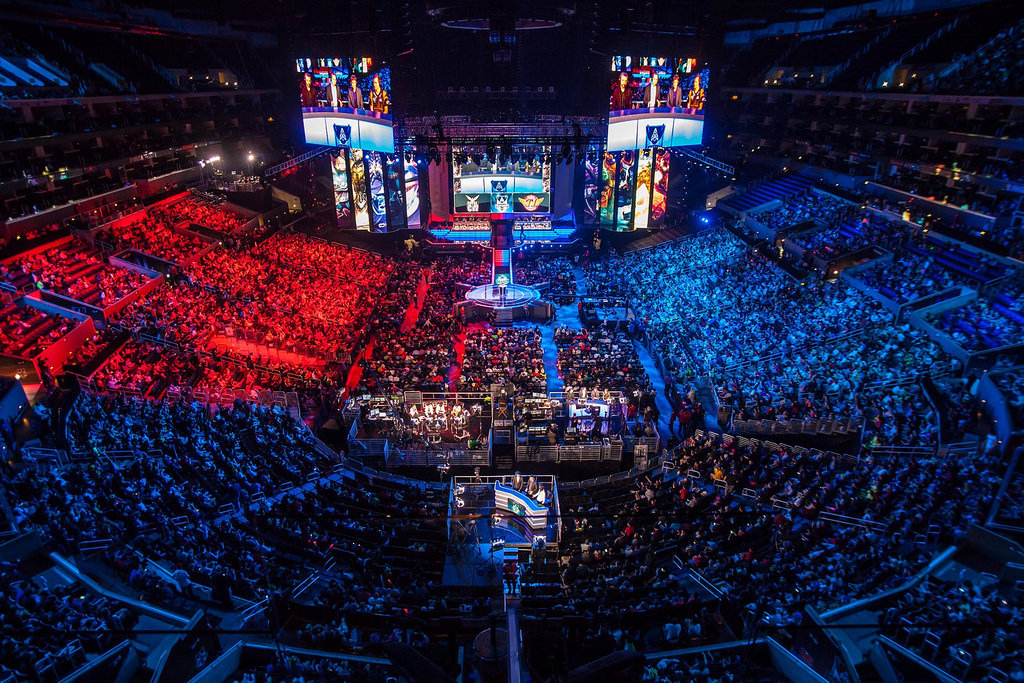
DPA, Hamburger Morgenpost and Live Blog join forces for the ESLOne Hamburg
“The format had to be fast, containing and frequently updating multimedia content” – Malte Weber, DPA
The Solution
As so many e-sports fans follow coverage online, the decision for DPA and Hamburger Morgenpost to opt for live, online coverage was a no-brainer. And with its easy-to-use interface and array of useful tools, Live Blog was the software the team arrived at.
“Regarding the target group, the decision to go for some sort of live coverage was obvious. As Sourcefabric is in use at dpa-live, including customised adaptations and adjustments, the decision to opt for Sourcefabric was obvious… obvious because of its easy tools for integrating content on customer’s website; obvious because of how easily users can edit content – especially with regards to embedding multimedia content”.- Malte Weber, DPA
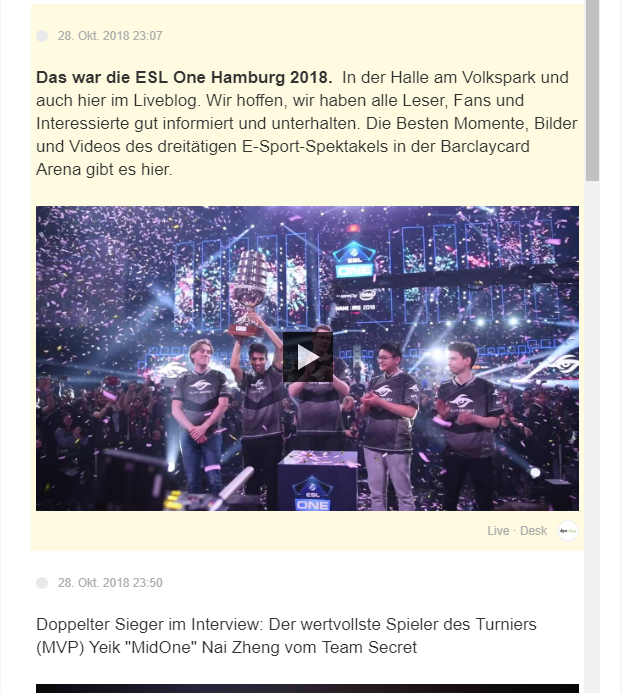
The live blog feed
The Results
The editors behind DPA and Hamburger Morgenpost’s ESLOne coverage began posting updates from 12pm on the very first day of the tournament, keeping their audience updated with regular text posts, images and videos detailing the movements of players and score counts. The coverage was published without a hitch, and the editors were highly satisfied with the final result.
“It was self-explanatory, easy to use and fast. Embedding tweets, posts, images and footage sent from our reporters in the arena was especially fast and easy, revealing no difficulties or hidden traps”. – Malte Weber
What can Live Blog do for your next big event? Request a demo or get in touch with us to learn more: saas@liveblog.pro
May 23, 2018
Case Study: Live Blogging the Path to Eurovision’s Winner

CASE STUDY
 Case Study: Live Blogging the Path to Eurovision’s Winner
Case Study: Live Blogging the Path to Eurovision’s Winner
by Clare Charlesworth | May 23, 2018
With a legacy that spans over 60 years, the Eurovision Song Contest (ESC) has united Europe (and somehow Australia) through passionate singing performances – producing a combined 1,500 songs from over 50 countries. Only growing more popular with time, 2016’s Eurovision saw over 200 million people watching at least part of one of the three shows, making it the largest non-sporting TV event in the world.
Eurovision 2018 took place from May 8 – 12 in Lisbon, Portugal, with the overall theme for the contest being “All Aboard!”. With their active international fanbase, the Eurovision site was sure to receive tens of thousands of hits all at once, with many eagerly seeking out highlights, behind-the-scenes content and a second screen experience. And what better way to keep their fans informed than with a live blog; allowing readers to receive continuous updates through text and a range of multimedia.
The Challenge
With a fan base so engaged and actively scouring the net for the latest Eurovision updates, the live blog was sure to receive tens of thousands of concurrent users. Eurovision needed a live blogging software that would be able to withstand the pressure of that many users at once and one that would allow the organisers to prepare the coverage well in advance as to keep up to date with the scheduled performances of the artists.
The Eurovision Song Contest digital team needed a live blog that was easy to manage so that they could both create new content and publish already prepared content saved as drafts and contributions. Contributors needed something fast and simple to give continuous updates, incorporate social media and different forms of multimedia (photo galleries, YouTube videos of performances). Additionally, it was important for the live blog to fit in with Eurovision’s overall branding and corporate identity.
The Solution
In mid-April of 2018, the Eurovision Song Contest, through their representative, the Dutch digital tech agency Scrn, decided to use Live Blog as their live blogging platform for the popular song contest.
Well aware of the extraordinary interest surrounding the event, the Live Blog team made sure that Eurovision’s live blog would be able to withstand that many visitors at once. They completed several performance tests and upscaled Live Blog’s Cluster, making certain, in a small window of time, that Live Blog would excel in covering this immensely popular live event.
Live Blog adapted the look and feel of the ESC’s live blog by incorporating the fonts and colour-schemes associated with their corporate identity in a custom theme. This allowed for the live blog to fit seamlessly into the larger Eurovision branding.
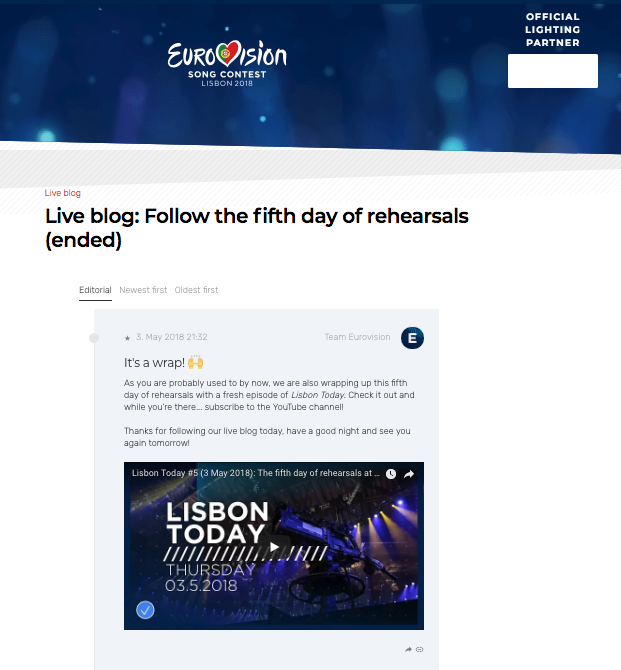
The Eurovision Song Contest’s live blog complemented their branding nicely.
The Results
Two weeks after joining Live Blog, Eurovision’s live blog was already in use by the Eurovision Song Contest digital team to create a second screen experience for Eurovision fans. The digital team used Live Blog to share highlights of events, behind-the-scenes sneak peeks at the rehearsal process, YouTube clips of different performances and photo galleries of the performers. They were also able to use Unicode icons, making their posts more engaging and social media friendly.
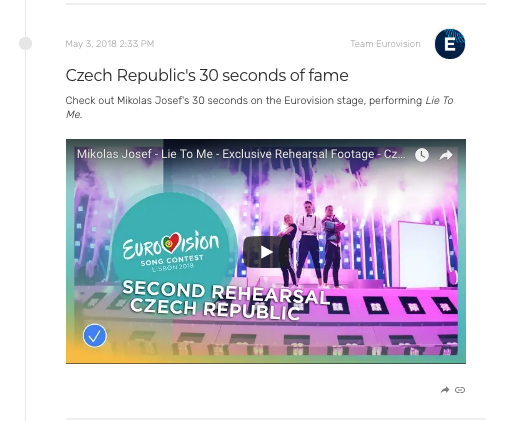
The inclusion of YouTube videos in the live blog allowed for sneak peeks of the upcoming performances.
Social media was also easy to include in the live blog; the social media embeds were created by copying and pasting a URL, saving the digital team valuable time and effort.
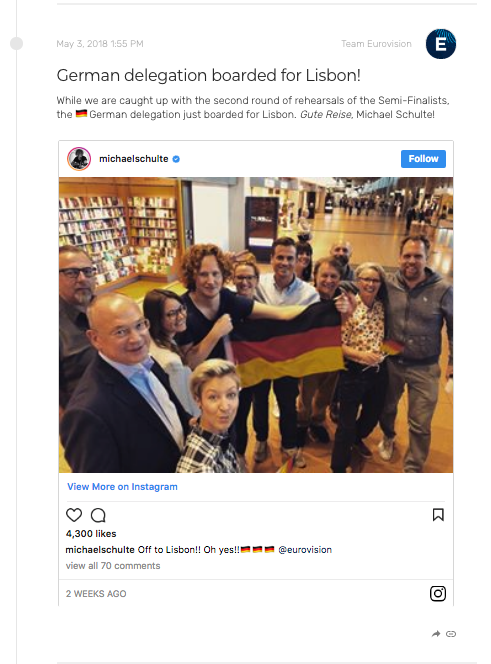
It was easy for the Eurovision Song Contest digital team to incorporate social media into their live blog.
Marko, a member of Sourcefabric’s system team, remarked on the fact that even with the high interest for Eurovision’s live blog, Live Blog’s Cluster worked smoothly for both readers and editors throughout the coverage of the event.
By using Sourcefabric’s live blogging tool, Eurovision was able to maintain an exciting live blog that was continuously visited by many throughout the song contest. Those working behind-the-scenes at Eurovision were happy with the collaboration.
Sietse Bakker, CEO of Scrn, the Eurovision Song Contest’s official digital agency, said
‘the tool gave us what we needed in a very short amount of time. While a lot of people use Twitter while watching the shows and Eurovision has a very active presence there, the live blogging tool provided us with an opportunity to be spontaneous on the website as well. All with little effort and without a glitch’.
What can Live Blog do for your next big event? Request a demo or get in touch with us to learn more: saas@liveblog.pro
March 7, 2018
Case Study: 6 Reasons to Live Blog Your Next Conference
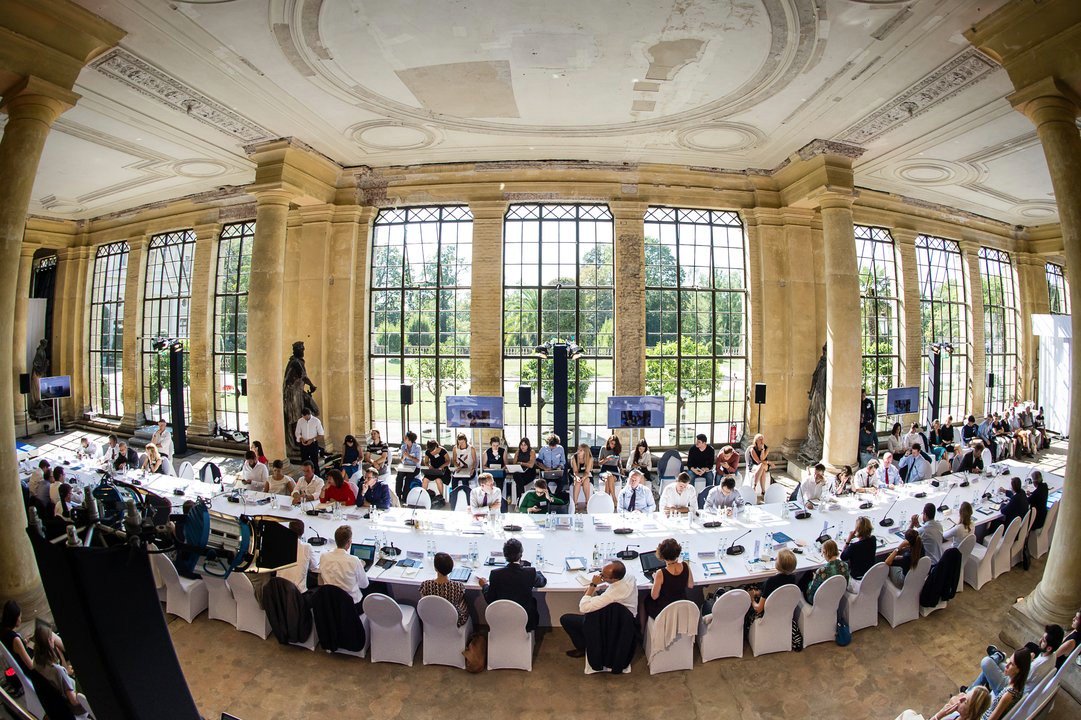
CASE STUDY
Case Study: 6 Reasons to Live Blog Your Next Conference
by Julia Vernersson | March 7, 2018
M100 Sanssouci Colloquium is an international forum aiming to promote democracy and freedom of expression, bringing together Europe’s top editors, commentators and high profile public key figures such as Angela Merkel and Sigmar Gabriel, the German minister of foreign affairs. The latest meeting in September 2017 focused on the impact of recent political developments, as well as the future and responsibility of the media. Sophia Wellek from the M100 Sanssouci Colloquium staff says:
“Using Live Blog had a specific impact on the debate at the M100 Sanssouci Colloquium. We were able to provide a versatile coverage, which illuminated the debate from different angles and focused the event.”
M100 first used Live Blog in 2016 to train their team of young journalists in how to live blog an event. Experiencing the effect on the debate, the exposure of the live coverage and the benefits of having instant documentation, the M100 team found Live Blog was a must-have tool.
The Challenge
Live coverage is proven to raise engagement and reach a wider audience. In the setting of conferences, it brings an opportunity to add more diversity to the discussions. In cases where Live Blog is present on stage, the Live Blog editor can function as a moderator by embedding relevant tweets and comments from the audience, allowing instant interaction with the speaker. Sophia Wellek:
“Through the live blog different opinions were visible at the event and attendees could participate digitally in the debate. At the same time, quotes from speakers could be highlighted and content reproduced. As a result, the tool did not only enrich the discussions, but also facilitated the coverage of the event.”
With Live Blog, editors can embed tweets, short quotes, audio and live streams. As the M100 is an invite-only event, it is interesting to engage with a non-present audience online. The Live Blog posts themselves consist of short highlights and it is easy for an outside audience to quickly get an idea of what happened at the event.
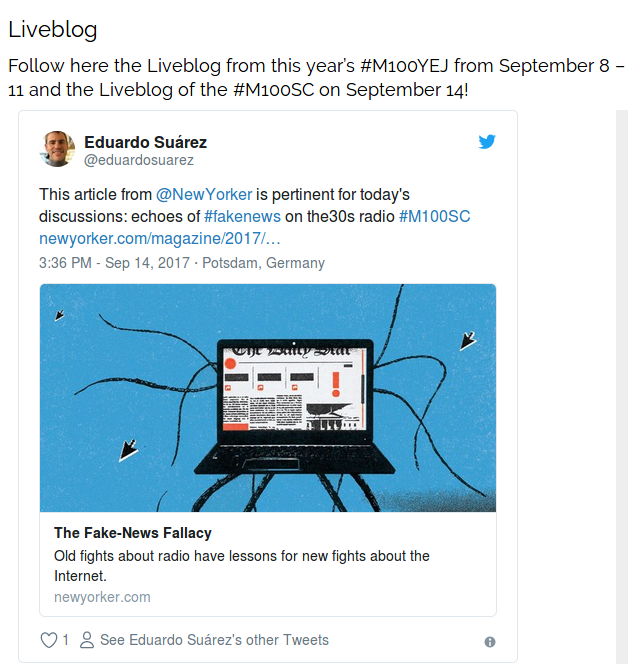
Tweets from the audience which enhanced the discussion themes were embedded in the Live Blog.
What is live blogging’s advantage compared to using general social media channels? Live blogs are more versatile than Twitter hashtags, where information might get drowned in the volumes of content, and at the same time more open than a Facebook page, which requires membership to interact. Instead it is an ideal combination of curated social media content and content provided by the reporters on the ground. As it can be fully integrated into the design of a conference website, it is easy to reach out with information and connect with attendees.
The Solution
The M100 Live Blog was managed by 25 young journalists who took part in the event, and learned how to live blog throughout the meeting. With its journalistic workflows, Live Blog makes it easy for teams to collaborate and contribute, while editors are able to keep an overview, as well as prioritize and correct items before official publication. This is how Sophia Wellek from the M100 Sanssouci Colloquium staff puts it:
“By using the contributors’ function of the Live Blog we were able to correct errors in the documentation and interpretation of the discussions. Thus, we could effectively prevent the publication of false quotes and misunderstood statements.”
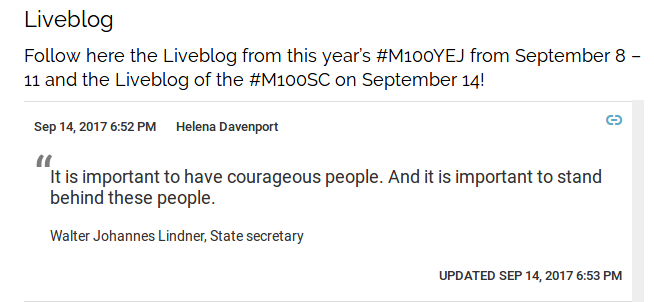
The contributors’ function enabled the organisers to make sure quotes and statements were captured correctly.
Following the event, the live blog functioned as curated documentation of the event and was seamlessly integrated into the design of the M100 website. Posts can be sorted in ascending or descending order, and important highlights can be filtered by users to get a quick overview of what happened. Also the possibility to pin prominent posts at the top of the timeline allows for the archived live blog to be kept as documentation of the event that people can refer to anytime afterwards.
The Results
Through our partnership with M100, we identified six advantages of using live blogging tools at conferences.
- Live Blog makes it possible to cover an event fast and intuitively. The Live Blog Reporter app makes sure your live blogging team can collect all the content they need on the go, but also rely on content prepared as drafted posts prior to coverage.
- Providing your press team with live blogging tools that follow professional journalistic workflows makes it easy to engage new staff, beginners and volunteers in live reporting. You can gather highlights conveniently through multiple channels with drag and drop functionality and review what is going online before it is published.
- Deciding to add live coverage to an event promotes live interaction between attendees, speakers and even your outside followers.
- A live blogging platform creates social media-friendly event documentation on the go, adding your own branded channel of information.
- Live Blog enhances your relationship with your sponsors through specifically sponsored live blogs and advertising management in the flow of the feed.
- Take advantage of extra publicity using our SEO-friendly theme, which will make your live blogging platform more visible to search engines.
If you are interested in using the best live blogging platform for your next event, get in touch with us: saas@liveblog.pro
We provide software solutions and can offer training and a custom introduction to our tools for your team.
October 4, 2017
Case Study: Using Live Blog for Breaking News

CASE STUDY
 Using Live Blog for Breaking News
Using Live Blog for Breaking News
by Anna Rohleder | Oct 4, 2017
In April 2015, Nepal was struck by the largest and most devastating natural disaster the small country had experienced in 80 years. It has been reported that nearly 9,000 people died as a result of the earthquake, and Nepal continues to feel the impact of the devastation caused to this day. While there was international media coverage of the earthquake, the Nepali Times was able to offer its readers a unique on-the-ground perspective. However, with the Nepali Times being a weekly publication, they lacked an avenue to give continuous updates to their readers in real time. That was the case – until they began using Live Blog.
The Challenge
As a weekly publication, the usual mandate of The Nepali Times is to provide analysis and commentary on the news rather than primary reporting. All that changed when the 7.8-magnitude earthquake hit Nepal on April 25, 2015.
As one of the country’s few English-language news outlets, the Nepali Times had an opportunity to provide its perspective on the disaster to a global audience. About half of its readership comes from outside Nepal.
However, there was no ready tool for real-time reporting of the earthquake and its aftermath, nor was there an existing format for such coverage.
The Solution
Live Blog was the answer to both issues.
Combining a web-based authoring environment on the back end with a live blog feed that can be embedded into the front end of any website, Live Blog is an all-in-one live coverage tool.
The open-source live blogging platform is also fast to set up and intuitive to use. These would constitute key benefits to any news organisation covering a natural disaster, but were especially helpful for a small outlet like The Nepali Times with a staff of less than a dozen. The Nepali Times debuted its own Live Blog just over a week after the initial quake, allowing the newspaper to cover the aftershocks as well as rescue and rebuilding operations.
The Nepali Times featured its earthquake live blog on the main section of its home page for several weeks and kept it available for five months afterwards. “Live Blog is great for when something has just happened,” says Ayesha Shakya, online producer for the Nepali Times. “It is best used when people are seeking news. Even when we did not have any updates as such, we found that readers were following the photos we posted.”

Case Study Nepali Times: Using Live Blog for Breaking News
The Results
Editors and producers at The Nepali Times added live coverage to their content portfolio in a short period of time. Live Blog also boosted the newsroom’s skillset, with the ability to curate updates from a variety of social media and post them in one place. The experience provided the inspiration to use Live Blog for coverage of the next big national news event, the revision of Nepal’s constitution, which happened just a few months later.
As a side benefit, Live Blog also offered an instant upgrade to the paper’s digital presence. “We found that Live Blog’s clean, simple design made our site look more modern and dynamic,” Ayesha Shakya said.
What can Live Blog do for your news organisation? Get in touch with us to learn more or request a demo.
About the Nepali Times
Founded in 2000, the Nepali Times is a weekly English-language newspaper with a strong digital presence. It has 41,000 fans on Facebook and 275,000 followers on Twitter.

